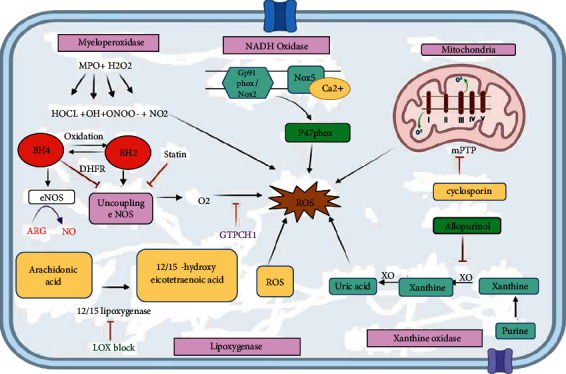Figure 1.

Schematic representation and molecular mechanism of the sources of ROS generation in CVD. Mitochondria is the leading cause of ROS generation; complexes I and III produce superoxides and open mPTP pores in the mitochondrial membrane through ROS release. NOX2/gp91phox generates O2•, and other members of the NOX1, NOX4, and NOX5 family are known to be involved in ROS generation. Xanthine oxidase accepts an electron from O2 and produces O2• while its action can be blocked by allopurinol. Lipoxygenase produces ROS by acting on arachidonic acid into HETE, and LOXBlock-1 blocks this step. When eNOS is uncoupled, it forms O2• instead of NO and helps in ROS production. MPO is the critical oxidative stress biomarker that reacts with H2O2 and produces various super radicals, which are the primary source of ROS.
